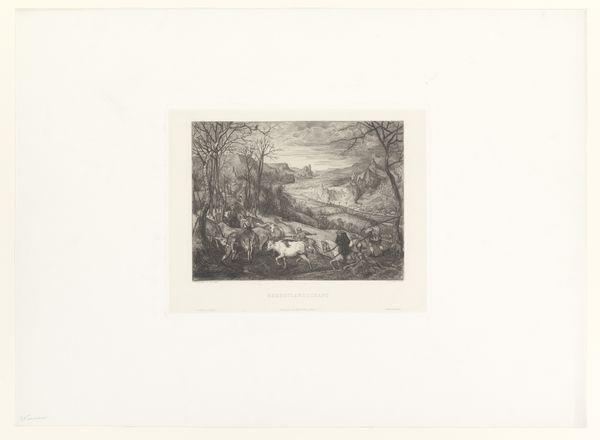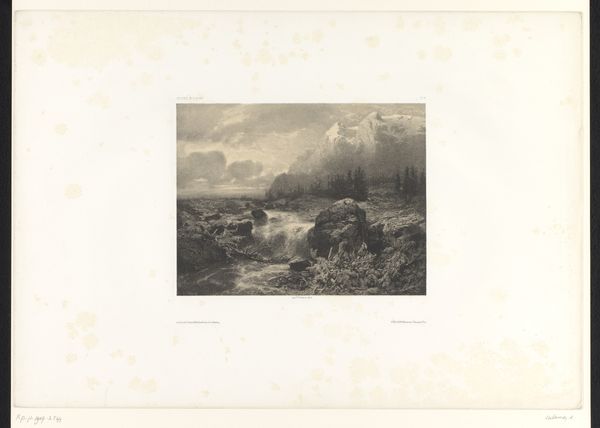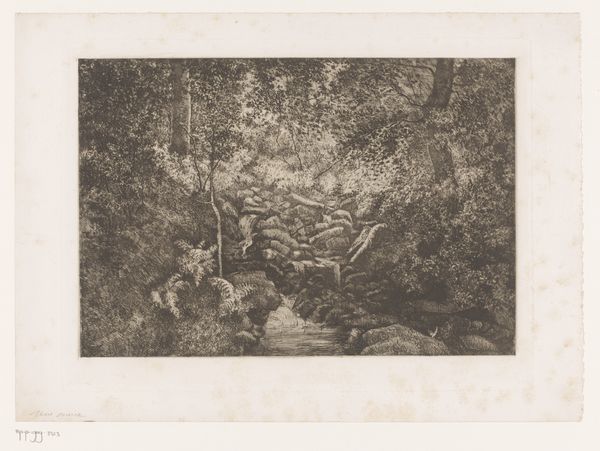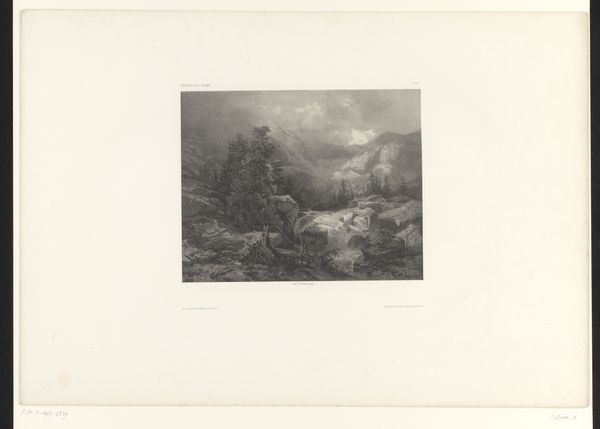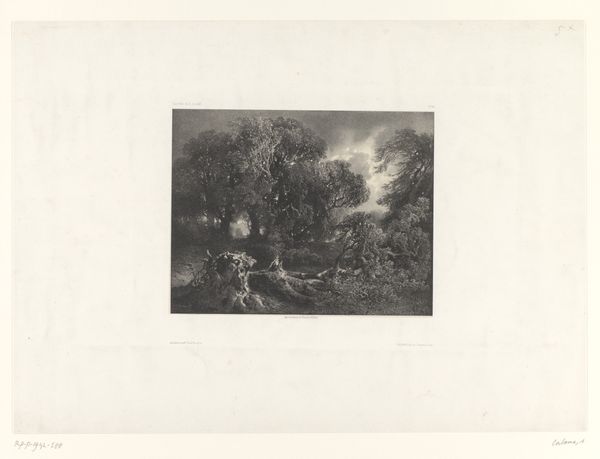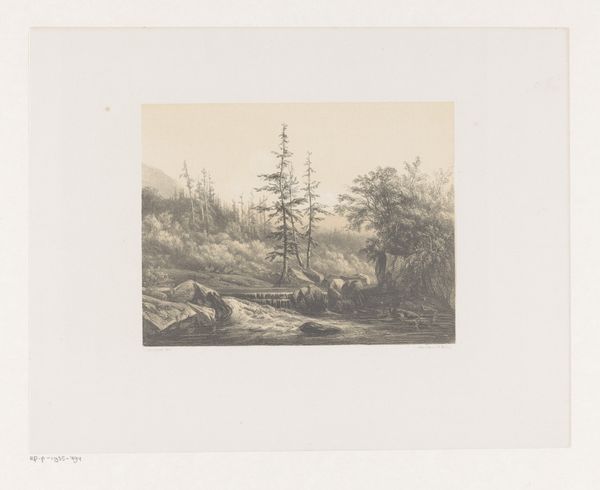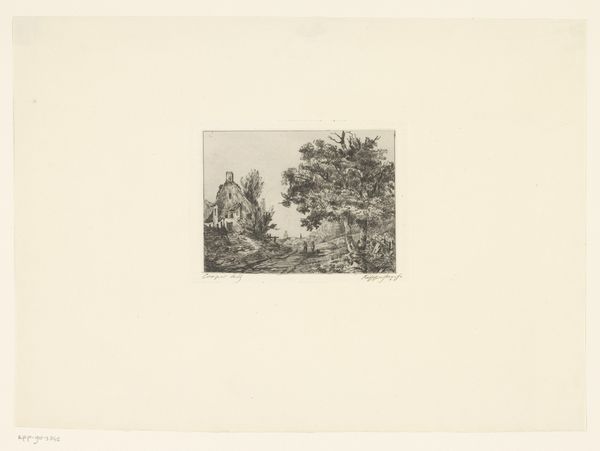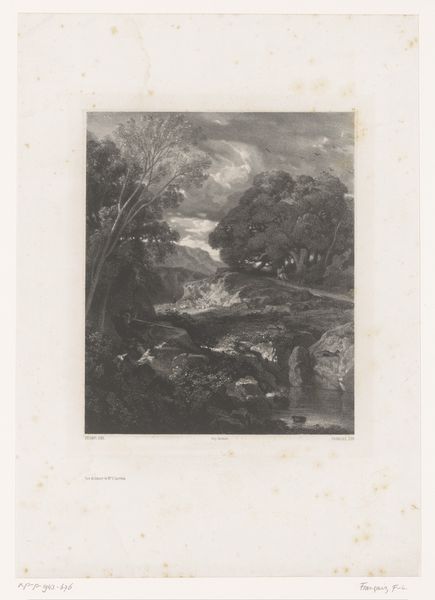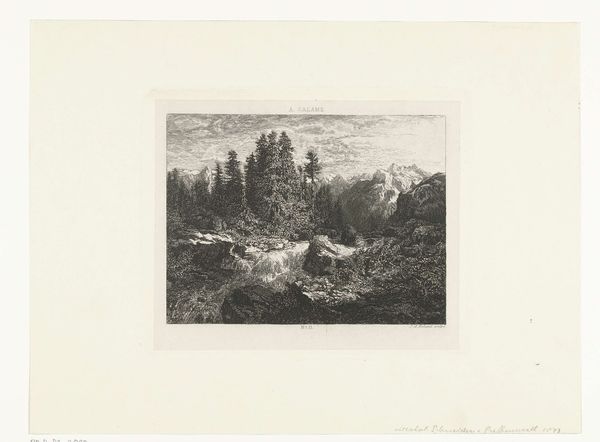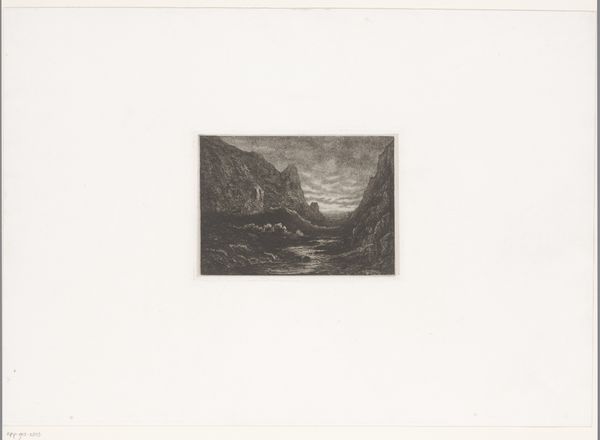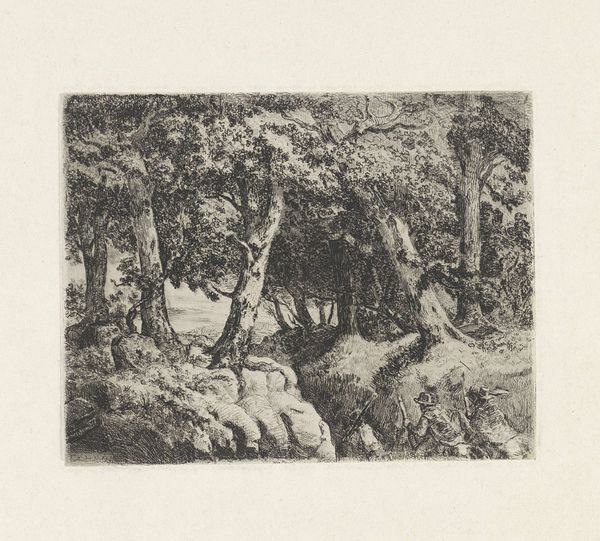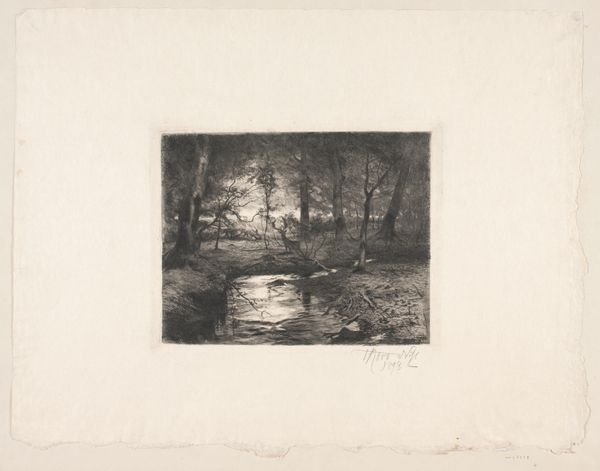
Dimensions: height 197 mm, width 275 mm
Copyright: Rijks Museum: Open Domain
Editor: Here we have "Landschap met dorp in een bergdal langs een rivier met brug," a landscape featuring a village nestled in a mountain valley along a river with a bridge. It’s an engraving or etching by Auguste Numans, dating from sometime between 1833 and 1879. It feels…dreamy. The light is just beautiful. What can you tell me about it? Curator: The work encapsulates the Romantic ideal of nature as sublime and powerful. Consider its socio-political context; urbanization and industrialization were rapidly changing landscapes, creating a longing for an idealized past, seen here in the serene village setting. How do you think Numans uses light to shape the viewer's experience? Editor: Well, it feels like divine light almost. The sun is breaking through the clouds right above the town church. The artist clearly uses the light to make the location seem significant, maybe as a safe-haven. Curator: Exactly. The church is made central. But also consider who this work might have been for. Prints like this were often produced for a growing middle class with an increasing appetite for art and culture, making art more publicly available. What impact do you think broader access to images like this might have had on social perceptions of landscape? Editor: I suppose if more people could access landscapes through prints, they would gain appreciation for the land outside cities...perhaps develop more interest in conservation? Curator: Precisely. These images subtly shape public values and encourage people to take an active interest in preserving their cultural heritage. Anything else strike you? Editor: The contrast between the rushing water and the stillness of the buildings, and the almost invisible people on the bridge. It's really all about that romantic focus on nature's beauty. I had not really thought about this art as being for regular people. Curator: It shows us how art interacts with cultural forces, influencing both social perspectives and individual aesthetics, and how seemingly simple prints like these participated in the distribution of cultural values to a broader audience. Editor: This was quite illuminating. I never considered landscape art in this socio-historical context before. Curator: Indeed! Always try to explore what and for whom an art was created. It allows us to look into history.
Comments
No comments
Be the first to comment and join the conversation on the ultimate creative platform.
